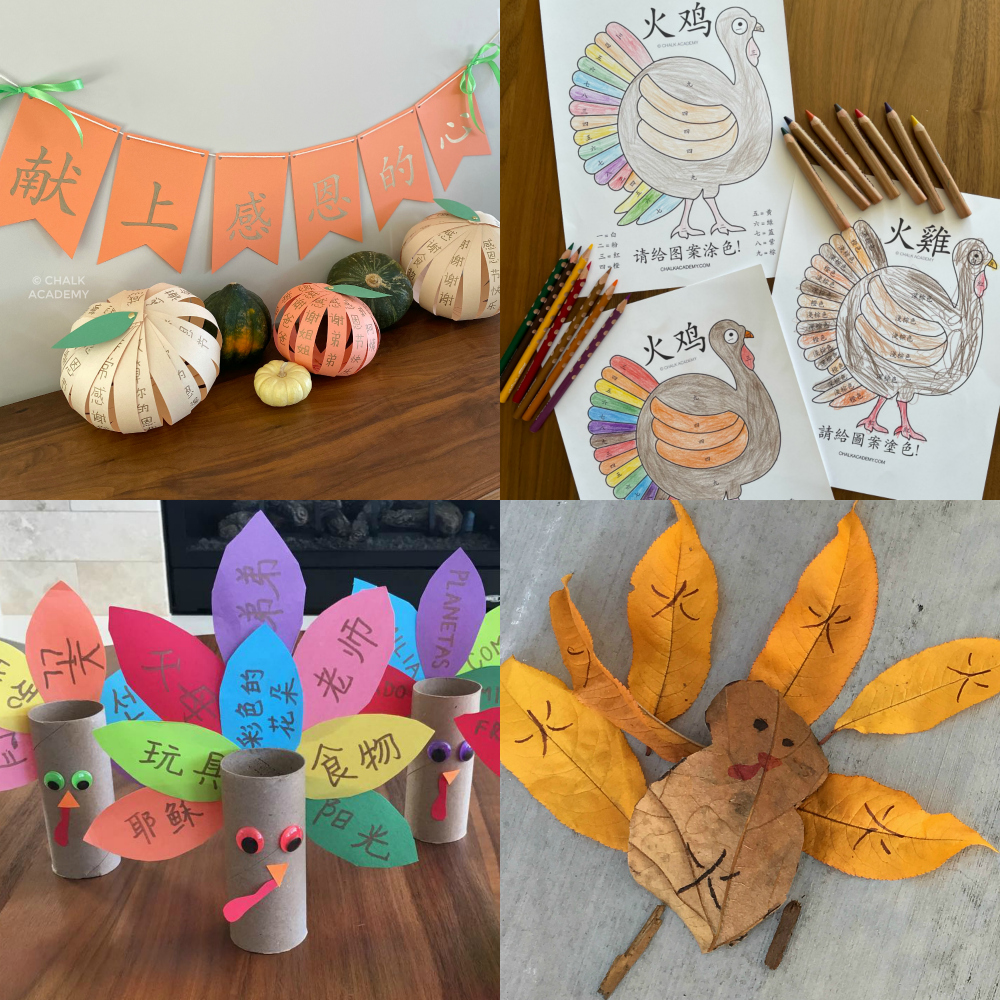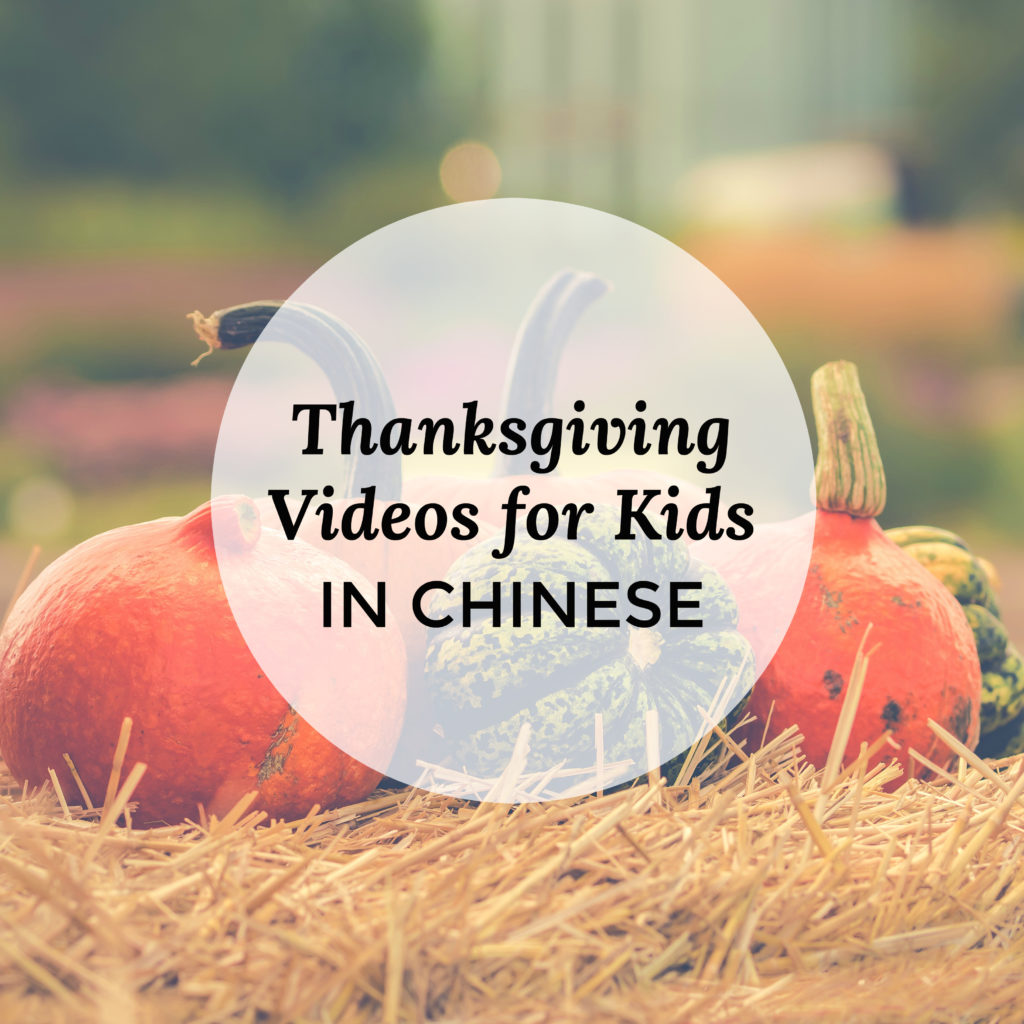Chinese Thanksgiving and Native American History Month Books

November is here, and it’s time to celebrate Native American History Month and Thanksgiving in the United States. If you’re navigating the world of bilingual parenting like us, we’re diving into wonderful English and Chinese children’s books about Thanksgiving and Native American history.
Representation is important, and this Thanksgiving book list recognizes Native American children’s book authors and illustrators.
For multicultural families like ours, English and Chinese Thanksgiving books help us learn about the similarities and differences between Asian culture and American Thanksgiving traditions.
Although the Chinese Mid-Autumn Moon Festival and Korean Chuseok are typically celebrated about a month or two before Thanksgiving in the United States, each holiday prioritizes bonding time with relatives, celebrating the fall harvest, and giving thanks for our blessings.

Related: How to Teach Your Child a Second Language at Home
Chalk Academy is reader-supported. Some of the links are affiliate links. When you buy something through an affiliate link, we may earn a very small commission at no cost to you. Details here.
Thanksgiving children’s books in Chinese and English
Here are our favorite books for kids about the Thanksgiving Holiday in simplified Chinese (简体中文 / jiǎntǐ zhōngwén), traditional Chinese (繁体中文 / fántǐ zhōngwén), and/or English.
Although the Chinese Thanksgiving books give an overview of common traditions, they do not delve into the history and perspective of the indigenous peoples. As such, I’ve included the best English Thanksgiving children’s books by Native American authors and hope they will be translated into Chinese.
Keepunumuk: Weeâchumun’s Thanksgiving Story

Most published Thanksgiving children’s books are told from the perspective of the pilgrims. In this Thanksgiving story, a Wampanoag grandmother tells her grandchildren a more complete story written collaboratively by multiple indigenous authors:
- Danielle Greendeer is a citizen of the Mashpee Wampanoag Nation and a member of the Hawk Clan.
- Anthony Perry is Chickasaw.
- Alexis Bunten is Yu’pik and Unangan.
This book reveals that the Wampanoag people lived in the area we now call Plymouth, and they helped the newcomers survive their first winter with generosity, plus corn, beans, and squash.
Although the newcomers called this inflection point “Thanksgiving,” in hindsight, the Wampanoag called it a “day of mourning” as disease and war were soon to come.
Although this Thanksgiving book is not available in Chinese, bilingual and monolingual readers can appreciate the Wampanoag words featured throughout the book. This can also serve as a conversation starter about language and culture loss from colonization.
Gorgeous illustrations by Native American author Garry Meeches Sr make the book even more accessible to children. The back of the book features a glossary of Wampanoag translations, recipes, and activities for interactive learning.
Magic School Bus First Thanksgiving 第一次感恩节
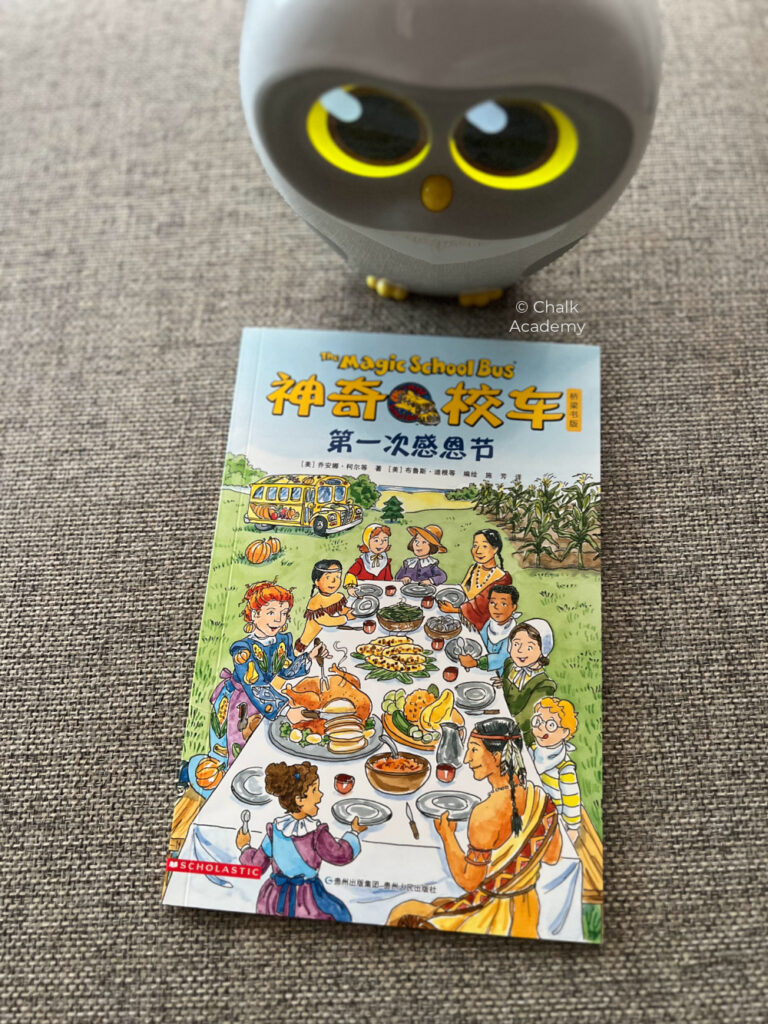
With the magical yellow school bus, teacher Ms. Frizzle takes her students back to the Mayflower, crossing the Atlantic and adjusting to life in America.
Native Americans, including Squanto, are shown as helping the pilgrims learn to plant and survive, and they feast together at the end of the story.
Although this Thanksgiving book skimps on the Native American perspective, it can be a helpful conversation starter for kids to understand how history has been taught in the United States.
The First Thanksgiving book 第一次感恩节 is part of the Magic School Bus Bridge Books 桥梁版 series. Luka Reading Robot narrates the Chinese edition in Mandarin.
Related: Easy Paper Roll Turkey Craft with Free Bilingual Template
Thanksgiving 感恩节

This overview of Thanksgiving begins with a brief overview of harvest celebrations in other cultures, such as the Greeks, Jews, and Chinese. Then, the American Thanksgiving holiday is explained from the perspective of the pilgrims.
As with all books by Gail Gibbons, Thanksgiving 感恩节 has detailed, realistic illustrations. In the Chinese edition of this Thanksgiving book, only a few words have Pinyin.
We Are Grateful: Otsaliheliga
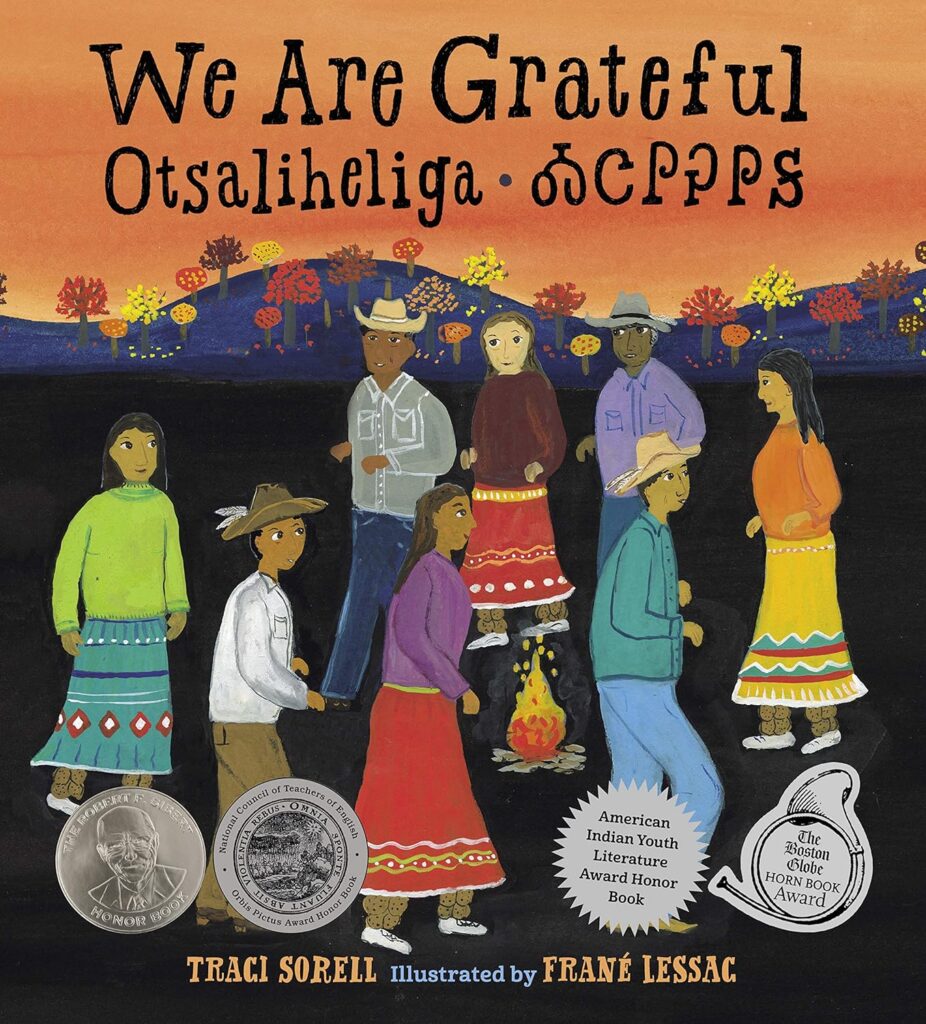
As the name suggests, Thanksgiving is about gratitude for our blessings. In the Cherokee language, people say otsaliheliga to express thanks, and in this story, children can learn how a Cherokee family appreciates big and small things through each day and season.
Written by Cherokee American author Tracee Sorell, her beautiful bilingual words are explained in a glossary at the back of the book.
Chinese and English children’s books about Native American history
These beautiful books about Native American people were originally published in English and translated into simplified Chinese (简体中文 / jiǎntǐ zhōngwén), traditional Chinese (繁体中文 / fántǐ zhōngwén), and/or English.
Related: Simplified and Traditional Chinese: Which is Better?
Throughout the month of November, including Thanksgiving, reading these books in Chinese and English is a wonderful way to honor the indigenous peoples.
We Are Water Protectors 水源守護者
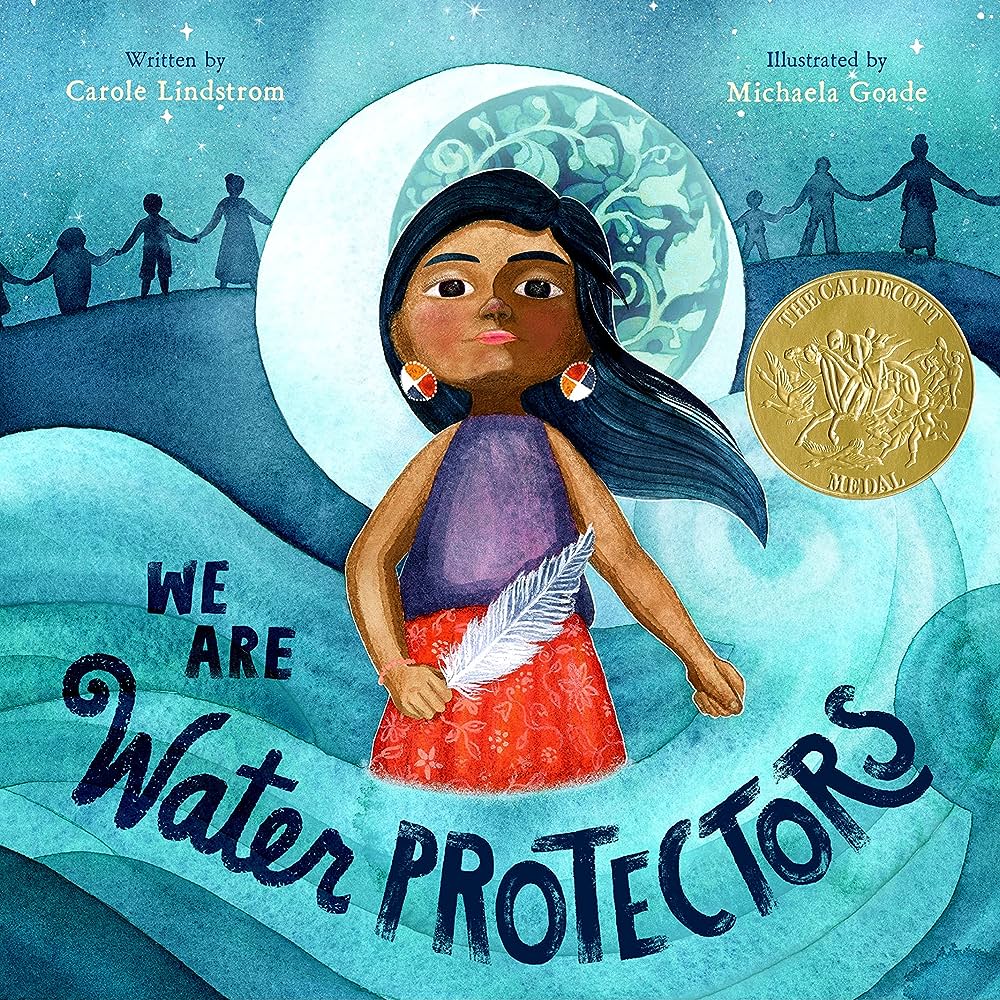
Inspired by the true events of the 2016 Dakota Access Pipeline protests, We Are Water Protectors is a creative story for children to understand the importance of our connection to nature.
The story highlights a brave Ojibwe girl and the indigenous people of Standing Rock who fight against an oil pipeline that threatens their water supply and way of life.
This book was originally written in English by author Carole Lindstrom, who is Anishinaabe/Métis and a member of the Turtle Mountain Band of Ojibwe. Her book has been translated into traditional Chinese (繁体中文 / fántǐ zhōngwén).
Related: Favorite Chinese Books About Autumn and Nature
Birdsong 聽見鳥兒在唱歌

Since Thanksgiving is a time for connecting with loved ones, this is a wonderful book to read in Chinese and English.
The gentle yet evocative story follows a young indigenous girl named Katherena, who moves to a new home with her mother. Feelings of loneliness subside as she befriends her senior neighbor, who shares her love of art, birds, and nature. As her neighbor’s health declines, their connection grows deeper.
Gorgeous illustrations pair the moving words by Cree-Métis author and illustrator Julie Flett. The back of the book includes a glossary and pronunciation guide for the occasional Cree words featured in the story.
We All Play! Kimêtawânaw! 我們都是這樣玩!
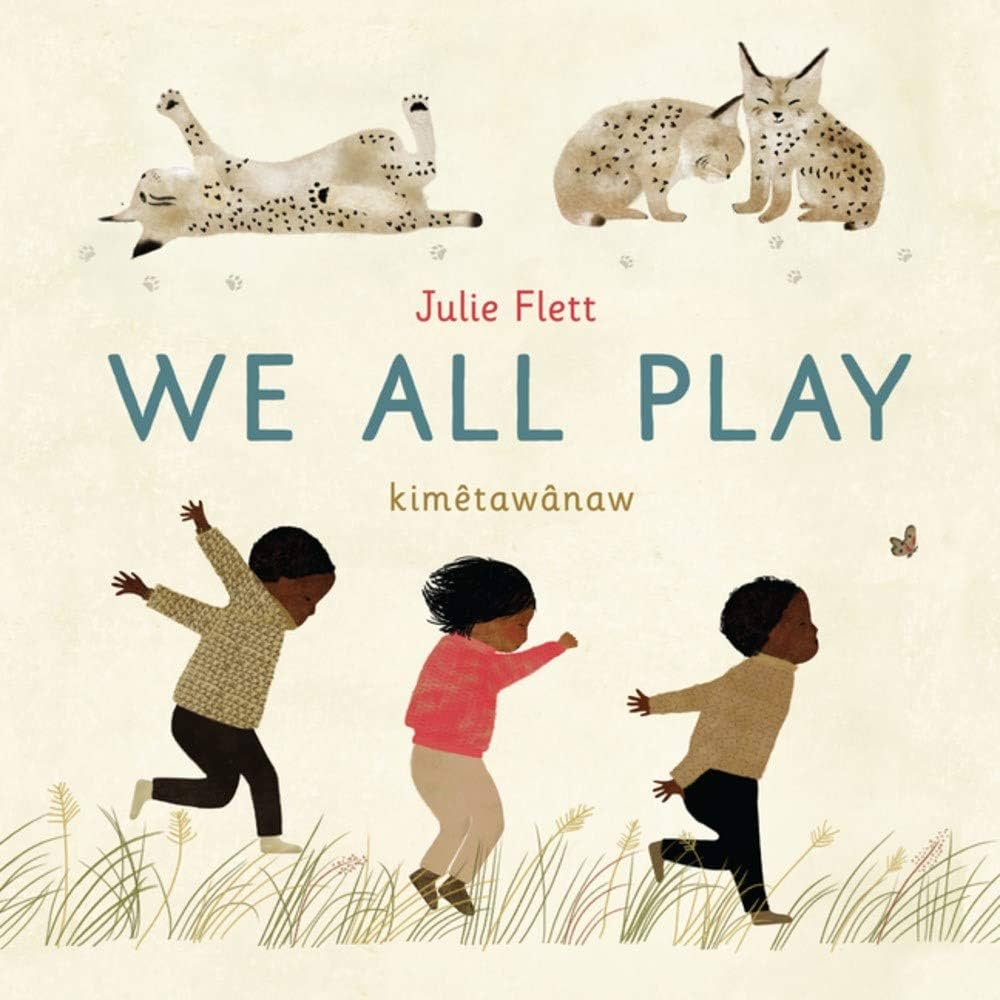
Here’s another beautiful book by author-illustrator Julie Flett! “We All Play” translates to kimêtawânaw in Cree and 我們都是這樣玩 in Chinese, and it’s as joyous as it sounds.
The simple words and happy illustrations celebrate the natural connection between children, animals, and the Earth. The story concludes with children and animals falling asleep after a wonderful day of play.
This lighthearted book is a delight to read in Chinese or English for Thanksgiving and year-round. The back of the book includes a glossary and pronunciation guide for the Cree words in the text.
The Girl Who Loved Wild Horses 野马之歌 / 野馬之歌
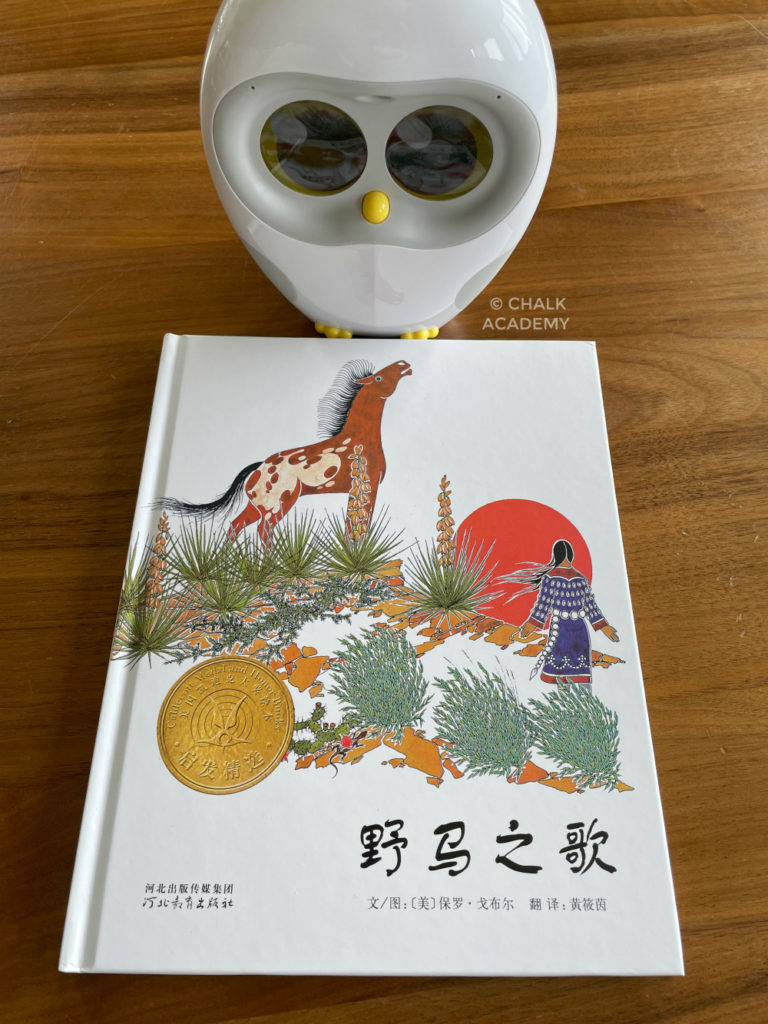
This beautiful Caldecott-winning story is about a young Native American Plains girl’s adventures with her beloved horses.
In this fable, the girl leaves home to roam with the horses and holds on tight (literally and figuratively) during a dangerous stampede. She eventually discovers that her true home is among the wild horses rather than her parents.
The Girl Who Loved Wild Horses was originally written in English by Paul Goble, a British-American author who studied and wrote about Native American culture. Luka Reading Robot narrates the simplified Chinese edition in Mandarin.
Fry Bread: A Native American Family Story
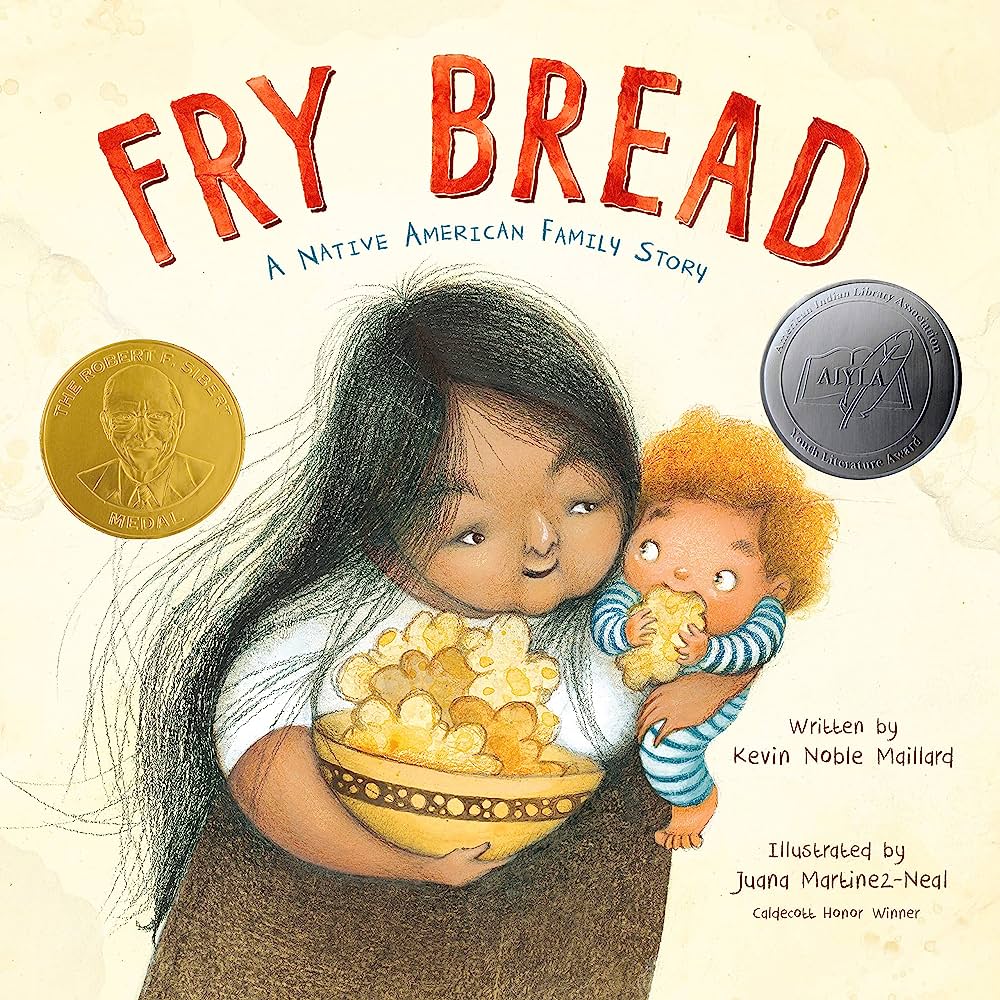
In Native American history, fry bread is bittersweet. For many Native Americans, it was adaptive sustenance that became comfort food. For others, it represents pain, as the New York Times reports.
Native American author Kevin Noble Maillard, a member of the Seminole Nation of Oklahoma, captures this conflict with child-friendly verse in his beautiful picture book.
For the author, fry bread is love and unity. Fry bread is family and history. Fry bread is accessible and sustaining. In the back matter, a fry bread recipe is provided with more historical details. For Thanksgiving, this could be a special recipe to try, although the book is only available in English and not Chinese.
Recommended: How to Talk to Kids About Racism: Inclusive, Bilingual Resources
What are your favorite English and Chinese books about Thanksgiving and Native American History?
What other books would you recommend to celebrate Native American History Month and Thanksgiving? Are they available in English or Chinese? Please share your review in the comments below. We’d love to learn from you.
